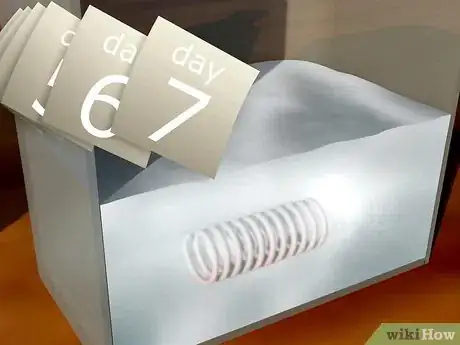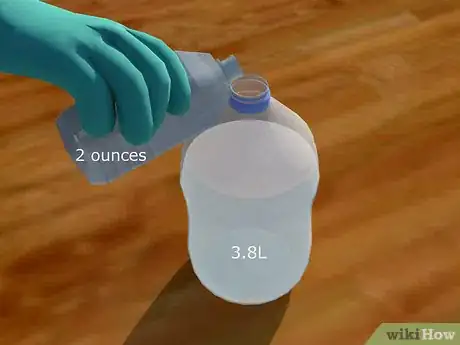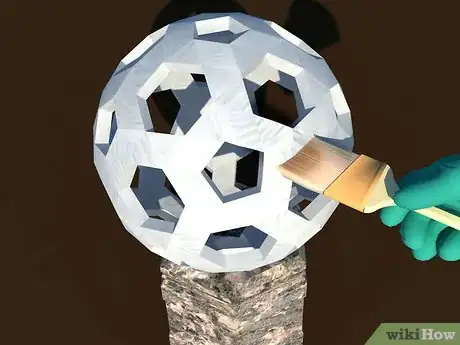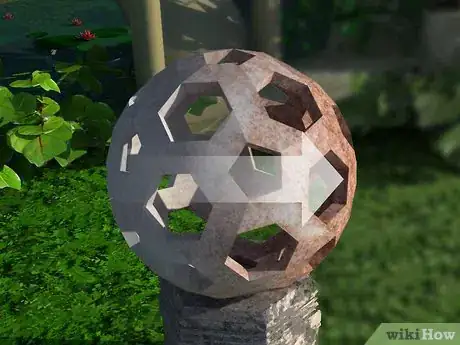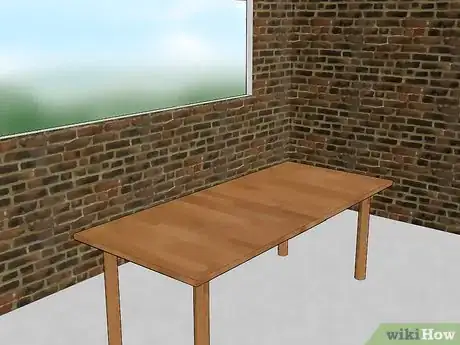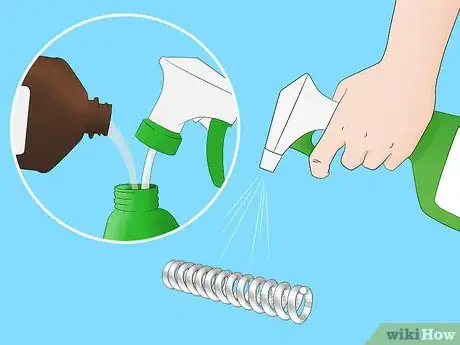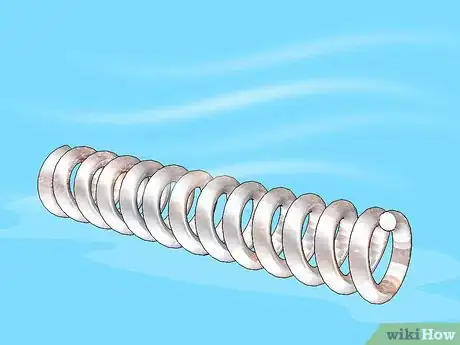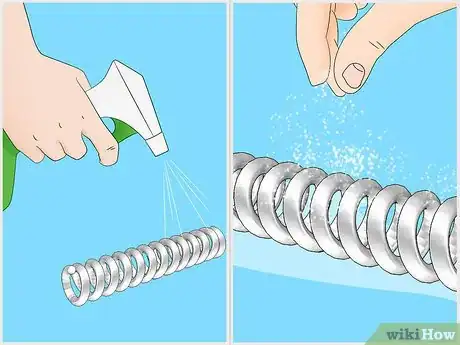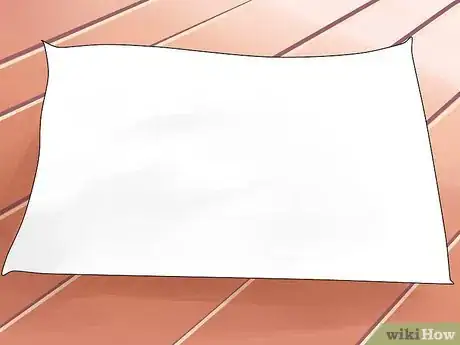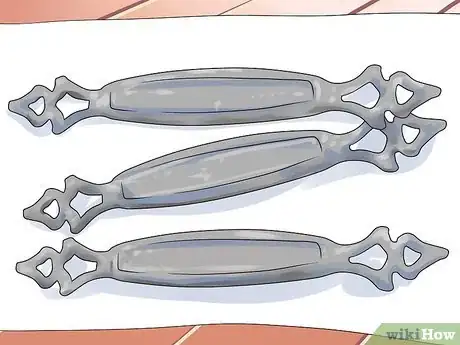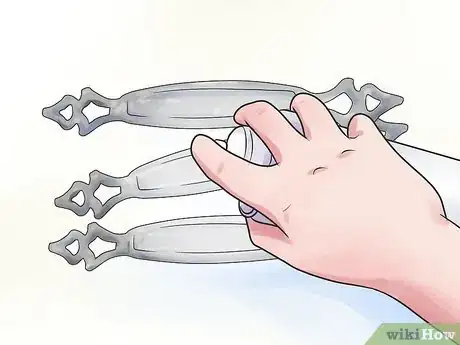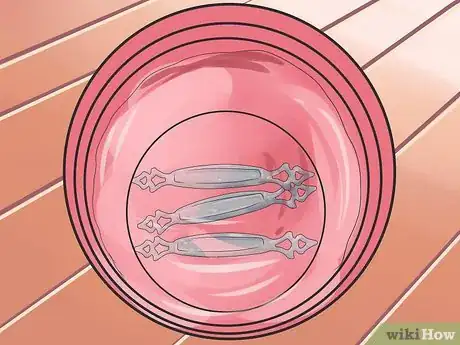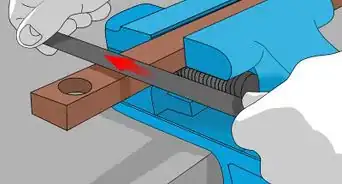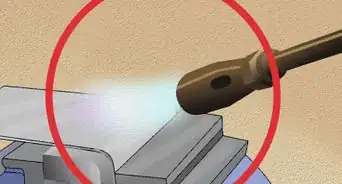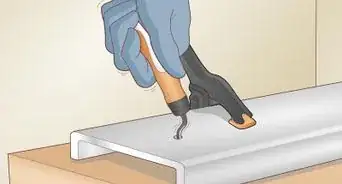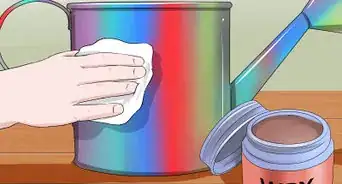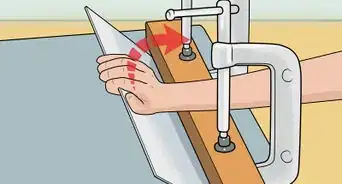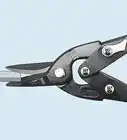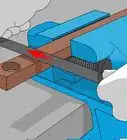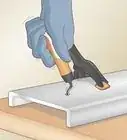wikiHow is a “wiki,” similar to Wikipedia, which means that many of our articles are co-written by multiple authors. To create this article, 30 people, some anonymous, worked to edit and improve it over time.
There are 9 references cited in this article, which can be found at the bottom of the page.
wikiHow marks an article as reader-approved once it receives enough positive feedback. This article received 14 testimonials and 94% of readers who voted found it helpful, earning it our reader-approved status.
This article has been viewed 586,314 times.
Learn more...
Most advice regarding rust involves how to remove it, but there are times when you may actually want to cause metal to rust faster. Whether you are a prop maker or a DIY’er, you might need to make metal rust to get the right look for your project.
Things You Should Know
- A metal must contain iron in order to rust; stainless steel and other iron alloys will be very difficult to rust.
- Add 2 ounces (60 ml) of hydrochloric acid to a plastic bottle and dissolve a tiny bit of copper wire in the acid for a week; clean your metal object thoroughly and apply the acid solution to rust it.
- For a faster (but less consistent) option, try spraying the metal item with hydrogen peroxide and sprinkling salt on it.
- Spraying or soaking your metal object with hydrogen peroxide and white vinegar may work as well.
Steps
Acid and Copper Solution
-
1Ensure that the metal you are working with will rust. Only metals containing iron will rust, and some iron alloys will rust slowly or not at all.[1] Stainless steel, an alloy of iron and chromium, will be very difficult to rust. Cast iron or wrought iron will rust most easily.
-
2Measure some hydrochloric acid into a plastic bottle. Hydrochloric acid is readily available in low concentrations at hardware stores, often labeled as muriatic acid. Handling it carefully, pour about 2 ounces (60 ml) into a sturdy plastic bottle. You should wear rubber gloves and safety glasses when doing this.[2]Advertisement
-
3Dissolve a bit of copper in the hydrochloric acid. Dissolving copper into the acid solution creates a wash that will speed the rusting process. The best way to dissolve copper in the acid is to wrap a short length of copper wire into a coil and submerge it in the acid for about a week.
- When leaving the copper to soak, do not cap the bottle tightly. The gases produced during the chemical reaction will cause pressure to build inside the bottle. Also, make sure to clearly label the bottle and store it out of reach of children or pets.
- Copper coins can be used as well. Make sure the coin's content is largely copper; for instance, United States pennies made after 1982 are only 2.5 percent copper. However, pennies made before 1982 are 95 percent copper.
-
4Dilute the copper and acid solution with water. After some of the copper has dissolved into the acid, put on protective gloves and carefully remove the copper from the solution. Once you have taken it out of the solution, you can discard it. Dilute the acid with water in a ratio of roughly 1 part acid to 50 parts water. If you used 2 ounces (60 ml) of hydrochloric acid, you should mix it with about a gallon (3.8 L) of water.[3]
-
5Clean your steel or iron thoroughly. The acid and copper solution will work best when the metal is very clean. There are commercially available products designed for cleaning scale or corrosion from metal, but a wash and rinse with soap and water will generally be sufficient.
-
6Apply the acid solution. Apply a light layer of the solution to the metal and allow it to air dry. The acid can be applied with a spray bottle or paint brush, although the acid will quickly deteriorate any metal components of the spray bottle. Wear protective gloves and safety glasses when applying the acid solution, and work in a well-ventilated area, preferably outdoors.
-
7Allow the metal to rust. Within an hour, you should see noticeable rusting on the metal. You do not need to wipe or rinse away the acid wash; it will dissipate naturally. If you desire a heavier layer of rust, apply another wash of the acid solution.
-
8Finished.
Peroxide and Salt
-
1Select a well-ventilated area to work in. Peroxide can be dangerous if too much is inhaled at a time. Choose a piece of metal that is either iron or tin--both will work with this method.
-
2Transfer the peroxide to a spray bottle. The spray bottle will make it much easier to apply to your metal. Spray your piece of metal with a sizeable amount of peroxide. Spraying more peroxide will help to speed up the rusting process.[4]
-
3Sprinkle salt onto the piece of metal. You should do this while the peroxide is still wet. The rusting process will begin almost immediately and is actually easy to see. You can pour on more or less salt depending on how thick or crusty you want the rust to be.[5]
-
4Let the metal piece air-dry, and don't touch it. If you wipe off the salt while the peroxide is still wet, you will disrupt the rusting process and cause your rust to come out blotchy. Once dry, rub the salt off and admire your work.
-
5Experiment with this method. While you have just read about the basic way you can use peroxide and salt to cause metal to rust, the sky is really the limit when it comes to this technique. Rub the salt off and then spray the piece with peroxide again. Try different amounts of salt or dip your metal into water once it has dried. The water will give the rust a smoother texture.
Vinegar and Peroxide
Community Q&A
-
QuestionCan it be used with metal that has a surface coating?
 Community AnswerIf it is galvanized you can use muriatic acid to burn it away. Use gloves and breathing mask and do it outside. Put the muriatic acid in a spray bottle and coat heavily - do not breath in fumes for health reasons. You will see it vaporize and burn off. Rinse with water and give it a light sanding or steel brushing.
Community AnswerIf it is galvanized you can use muriatic acid to burn it away. Use gloves and breathing mask and do it outside. Put the muriatic acid in a spray bottle and coat heavily - do not breath in fumes for health reasons. You will see it vaporize and burn off. Rinse with water and give it a light sanding or steel brushing. -
QuestionCan I use a brush while using this method and not affect the painted areas?
 Community AnswerYou could try scotch tape or something like that to prevent the liquid transferring to areas you do not wish to be affected.
Community AnswerYou could try scotch tape or something like that to prevent the liquid transferring to areas you do not wish to be affected. -
QuestionWill this work if I use apple cider vinegar?
 Community AnswerIt should work just fine, but it may be a bit slower. It doesn't hurt to try.
Community AnswerIt should work just fine, but it may be a bit slower. It doesn't hurt to try.
Warnings
- Always exercise caution when working with hydrochloric acid,[6] bleach, or peroxide.[7] Even in low concentrations, these chemicals can cause skin and mucous membrane irritation.⧼thumbs_response⧽
Things You'll Need
Acid and Copper Method
- Iron or iron alloy
- Rubber gloves
- Safety glasses
- Hydrochloric acid
- Measuring spoon
- Plastic bottle
- Copper wire
- Gallon jug
- Water
- Soap
- Cloth
- Spray bottle or paint brush
Peroxide and Salt Method
- Hydrogen peroxide
- Table salt
- Spray bottle
References
- ↑ https://www.bbc.com/bitesize/guides/zjb2pv4/revision/2
- ↑ http://metalgeek.com/archives/2006/06/13/000065.php
- ↑ http://metalgeek.com/archives/2006/06/13/000065.php
- ↑ http://www.lucydesignsonline.com/2013/08/how-i-give-metal-and-wire-pieces-aged.html
- ↑ http://gomakesomething.com/ht/age/rust-guide/
- ↑ https://www.bobvila.com/articles/muriatic-acid/
- ↑ http://www.h2o2.com/technical-library/default.aspx?pid=66&name=Safety-amp-Handling
- https://www.bobvila.com/articles/how-to-rust-metal/
- https://www.industrialmetalsupply.com/blog/how-to-rust-metal/
About This Article
Before making metal rust, make sure you have rubber gloves, safety glasses, and a protected work surface. Carefully pour your peroxide into a spray bottle. Lay your metal materials on your work surface, then spray the metal with peroxide. While the peroxide is still wet, you can either spray the metal with white vinegar or sprinkle it with salt. Let it sit until it's dry. If you don’t have peroxide, read on for more advice on how to make metal rust using hydrochloric acid.


